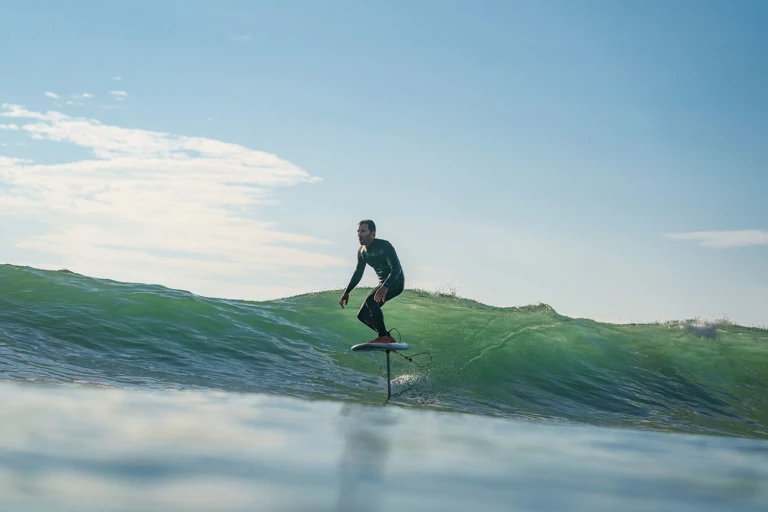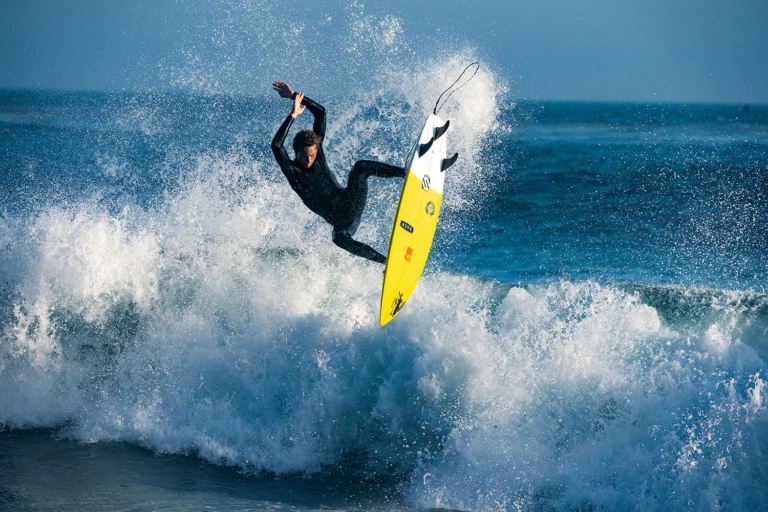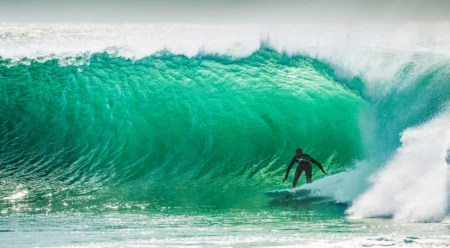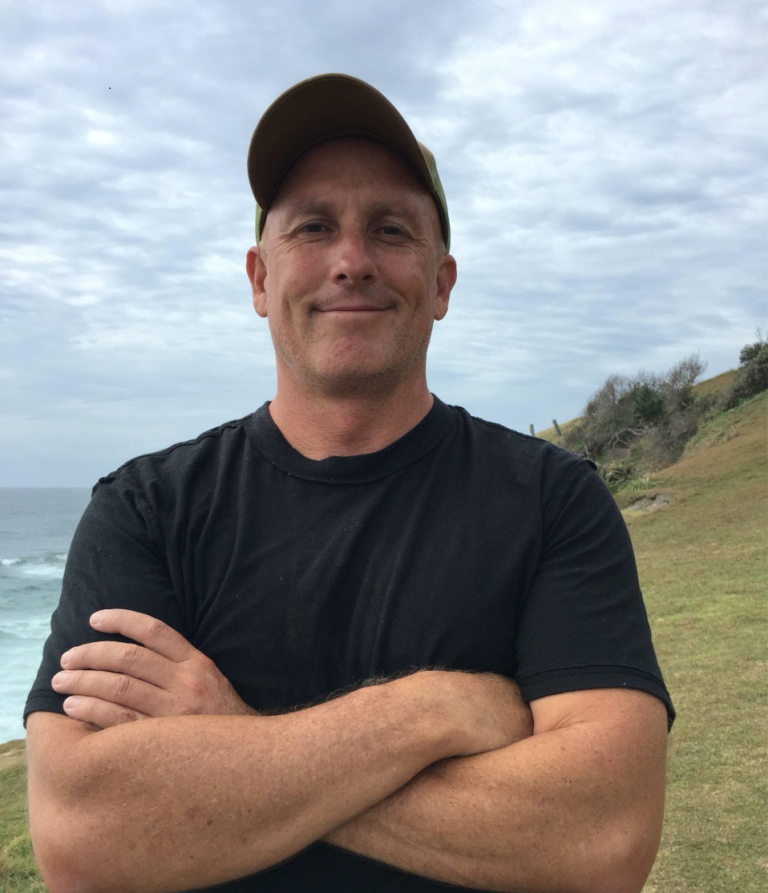A Conversation with Surfboard Designer Fletcher Chouinard
At Fletcher Chouinard Designs, the focus is on durable, high-performing equipment that lets you have fun no matter what the ocean is doing.
There are never enough hours in a day for Fletcher Chouinard. As a surfer, shaper, kiteboarder and new father, he was really doing the dance. Then along came foilboarding, which has made things even more complicated, but also provided him with a fresh perspective on having fun in less-than-perfect surf.
To learn more about Fletcher’s work, I met him at the FCD Surfboards shaping shed in Ventura, California. Also the spiritual home of Patagonia Surf, it’s a no-frills Quonset hut where Fletcher and his crew build boards from start to finish—a rarity in the surf industry these days. Step-ups, big-wave guns, small-wave grovelers and foils lined the walls, reflecting an eclectic love for the ocean and an open mind to shaping and design.
Set a few blocks from good waves and good wind, FCD Surfboards also sits close to the original Tin Shed, where Fletcher’s father, Yvon, started forging climbing pitons in the 1960s. The mediums are different, but the approach that has always run through everything Patagonia—build gear that works and lasts, and then get out with it and have fun—runs just as strong through FCD and Patagonia Surf. And as Fletcher can tell you, given today’s diversity of designs, it’s an approach that means there’s hardly any downtime anymore.

Shape it, then surf it: Fletcher Chouinard collects real-time design data a few minutes from his shaping bay in Ventura County, California. Photo: Scott Soens
What was it that made you commit your life to shaping and design?
FC: At first I was just a high school kid who wanted free boards. Then, after I made a few, I got hooked on the process and the way a small tweak to a shape would make a massive difference to how it performed. Each improvement would better my surfing, or at least broaden my experience. It was addicting for me. Eventually, I lost interest in my major at college and jumped ship to shape full time.
Has your approach changed much over the last 25 years or mostly remained the same?
FC: I’ve been more on the hybrid side of shaping since the beginning, and I feel like I’ve kept that up through the years, even in my guns. Width and thickness tend to work better for me personally, so that’s where my interest has been. I do use a lot of computer CNC/CAD stuff for designing now, which is both good and bad—it’s an amazing tool, but it can get away from you. I go back to the basics and hand-shape a few boards from time to time, to keep it real and not get lost in the minutiae. It’s funny, I’m often trying to decipher how to hand-shape something I computer-designed. It works, though.
Patagonia ambassador Ramón Navarro has been here working on boards with you. Does some of your hybrid approach come in there?
FC: Yes, it’s a pretty wide range we’re working on—from ten-sixes for catching what are practically open-ocean swells to the smallest groveler shapes, and even tow boards. Ramón is amped on the tow option again after his wave in Fiji. He got that crazy wave at Cloudbreak on a 15-year-old board, a board from literally the last time towing was a thing. It was sitting in his shed for 15 years, then he got the wave of his life on it. At the same time, he’s talking about how psyched and rejuvenated he is on shortboarding in smaller surf as well.
And that kind of small, groveler surf is where foilboarding comes in for you too, right?
FC: Well, nothing replaces getting barreled in good waves. But in most everyday surf, I just find foiling so much more interesting. It’s definitely a feeling sport, not a visual sport. It can look a bit lame, someone hopping up and down a lot, but it’s a real visceral feeling—you get a glide and you’re like, “Whoa, I gotta do that some more.” You’re not bleeding speed through turns, you’re actually accelerating. It slingshots you, and you just fly around.

Progression in board design has always relied on close collaboration between creatively minded shapers and surfers. Quinten Rubalcava launches north of Los Angeles, California. Photo: Scott Soens
Has it elevated your interest in other aspects of surfing, too?
FC: I think so. Summer can be really flat in Ventura, but with the foil you’re truly surfing. You’re out acting like a kid, just stoked, and it keeps you fired up on the whole thing. I look forward to summer now. And for me, the disciplines all cross over. Kiting, foiling, kite-foiling and surfing—they’re all part of the same experience. There’s always something to ride. But that can chew up all your time—there’s just no downtime anymore.
What’s your outlook at the moment on board materials?
FC: I love that there are shapers who are thinking about greener products. I mean, most people don’t have a lab, they don’t have a team of environmental scientists, but they’re doing what they can, which is great. When I got started in ’94, it was just Clark Foam and polyester resin. There were no off-the-shelf alternatives, so only a few shapers were deviating from the norm. In ’97 we started extensively testing alternatives here, and epoxy construction became the norm for us, mostly for durability reasons. To be honest, our health and environmental concerns came later. Since then we’ve upgraded our materials and methods many times, but mostly within the epoxy/EPS family. It’s a system that works—strong, light, less toxic, recyclable. There’s a lot of confusing greenwashing out there, but I think if you shape the best board you can that lasts as long as possible, and you do it locally using the least toxic materials that don’t sacrifice performance—that’s all you can do. You’re going to shelve a board if it doesn’t go, and to me that makes performance and longevity the most important things. We do harm with everything we make, so the goal is to make less.
You also talk about “shaping each board as if it were your own,” so could you tell me about the last board you made for yourself?
FC: I’ve got a couple of straight-up tube boards I’m stoked on right now—superpinny 5’10” to 7′ step-ups for Cloudbreak and Micronesia with more shortboard-style rockers and concaves. Boards for good waves. I want to still be able to ride a gun like a shortboard in pumping waves. Now I just have to find the time to ride them.
This essay was featured in the 2019 Patagonia May Catalog.

